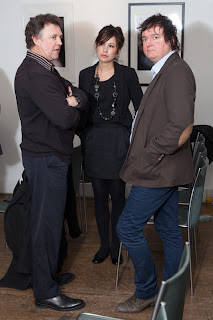Ask yourself, how much does social CRM really differ from what's gone before?
The tech may be different, but at the heart of these approaches is the desire to create a lasting loyal relationship with the customer. There are however, some key elements to social that are different from what we've seen before.
Elements such as brand control, amplification effect and the speed with which a message is spread have obviously been affected. But who we're now competing against in this market? That's very different. If we decide to enter the social sphere we're not competing for a share of wallet, we're competing for attention.
In 2010 the CEO of Google Eric Schmidt said: "Every two days we create as much information as we did from the dawn of civilisation up until 2003."
This drives the first principle of social; be interesting. While this may be blindingly obvious, if we're not interesting then our customers will just go elsewhere. It's not as if there isn't enough stuff out there to keep them interested, even if 90% of it is crap.
It's amazing how many times you'll hear marketing people say "how can we use social to get our message out?", as if what they have to say is intrinsically interesting. To put my point another way (paraphrasing Howard Gossage): "People use social media to engage with what interests them. Every so often that can be you."
OK - so you've made sure you're interesting. What's next?
Social by it's very nature is conversational - but not necessarily a conversation. Unlike in traditional CRM techniques, we must be prepared to talk with our customers - not at them. We can't just push messages out there and expect our audience to appreciate them. We have to be both a leader and a follower.
When it's appropriate we can lead, whether it's seeding the conversation amongst the community, adding value or helping customers achieve something they couldn't do before. A great example of this is how Adobe used Facebook to create a thriving community amongst its Photoshop user base (www.facebook.com/photoshop).
And while we're pushing messages out there, we also need to be listening (understanding who's saying what, when, where and how). As the old adage says, we're at least three times more likely to talk about a bad experience than a good one. With social it's all out there. If we piss someone off, we should expect to see it on some form of platform pretty sharpish. In the social world it's how we handle this that makes the difference between success and failure.
If we try to stifle criticism we're doomed to fail. One deleted comment leads to a re-posted comment, citing the original complaint and then some. It can start to snowball very quickly. It would be better to see this as an opportunity.
We have to accept that we are just a small part of the customer's brand perception. In the past we had no idea if Brian told Angela that he received terrible service, unless Brian also complained directly. At least now we can see our customer's concerns. Even if we don't think they really have the right to complain, at least there's the opportunity to solve the problem in the public arena - potentially gaining more than we stand to lose in the process.
And this is where the listening counts. There are now tools that allow businesses to monitor what's being said about them in the social sphere. When a problem arises and we're listening, we can engage with it before it gets out of control (and get to do so in a visible way).
With old CRM we'd listen to customers when we needed to. We'd do these things to create engagement. Now we listen to customers with social media as well as in person. We talk with them through social as well as on the phone. And in doing so we create stronger relationships.
The principles really aren't as different as we might have first thought they were. And if we start our planning from that perspective, then there's a fair chance that we'll get our use of social right.







